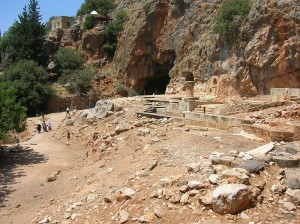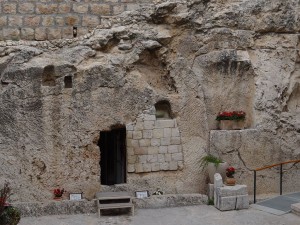My family and I recently returned from our first trip to Israel. We went with a group led by pastors from our church, Highland Baptist in Waco. As with so many who have gone to Israel, we found the trip to be spiritually invigorating and challenging. Seeing the archaeological digs, historic sites, and memorial churches gave vivid images and texture to places that I once only had vague (and often incorrect) impressions of. Caesaria Philippi, Capernaum, the Sea of Galilee and many more locales will now come with a host of vivid memories when I come across them in my Bible reading.

As Christians, we are not spiritually obligated to make pilgrimage. Most Christians in the world will not ever have a chance to visit Israel in this life, though we Christians all hope for the future New Jerusalem [Revelation 21].
As Christians, we also believe that our faith can and is fully incarnated in cultures around the world, so we do not have the kind of connection to a specific place (or language) as do Muslims to Mecca and Arabic, for instance.
Nevertheless, going to Israel reminded me of the utter importance of place to Christianity, especially in its Jewish roots.
Being in Israel helped me to see that my upbringing in an American Christian context and longstanding familiarity with the Bible had taken away some of the radical edge of the Bible’s claims about what actually happened in ancient Israel, especially surrounding the ministry of Jesus of Nazareth. If we forget about the grainy textures of particular places, we drain some of the immediacy of the miracles of the Bible. It is one thing to acknowledge that miracles happened long ago and far away. It is another to stand in those places, and to affirm that here, where we are standing, the miracles did in fact transpire.
It is one thing to affirm that God sent fire to consume Elijah’s “burnt offering and the wood and the stones and the dust” in I Kings 18, in his confrontation with the prophets of Baal. It is another to stand atop Mount Carmel, and to remember that it was here that God did it.
Similarly, it is powerful to take a boat ride onto the Sea of Galilee and to think, it was here that Jesus walked on water and calmed the storm in Matthew 14.

And of course, it is incomparable to walk the Via Dolorosa, and to think, it was here in these places that Jesus was condemned, mocked, scourged, and crucified. And whether at the Church of the Holy Sepulchre or the Garden Tomb, he was buried and rose again from the dead.
You don’t have to see these places and share these experiences in order to embrace the miracles’ veracity, by faith. But seeing the places challenged me afresh to recognize the strangeness and historicity of the claims of Christian faith. At a specific place and time in history, Jesus taught, loved, healed, worked miracles, died, and rose again.
If these things are true – and they are! – then we can readily appreciate the disciples’ reaction to Jesus walking on water and calming the storm. “Those in the boat worshiped him, saying, ‘Truly you are the Son of God,'” Matthew 14:33 tells us. When we view the places he walked, and return to the Bible’s stunning accounts of what He did, worship is the only fitting response to this Messiah. Casual affirmation just won’t do.


















